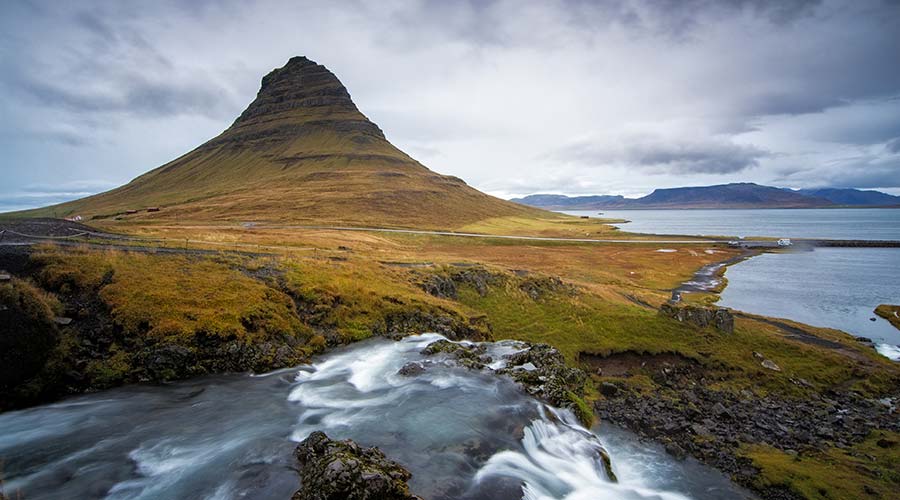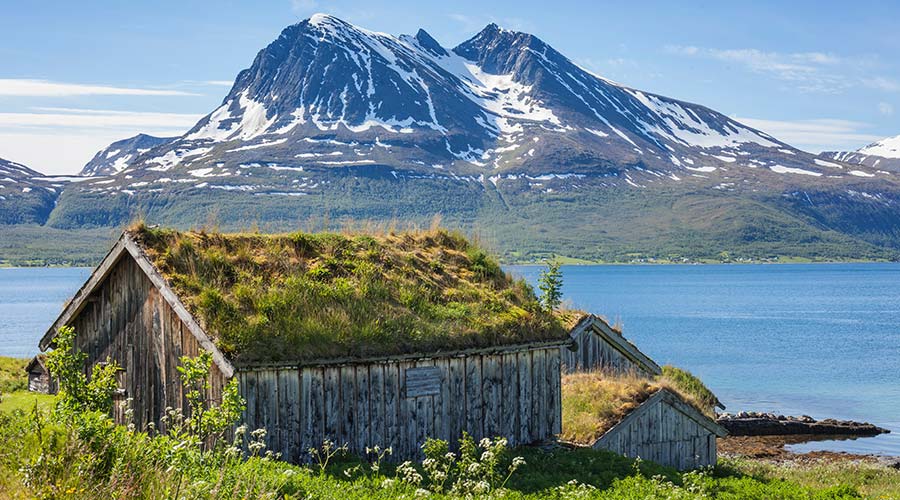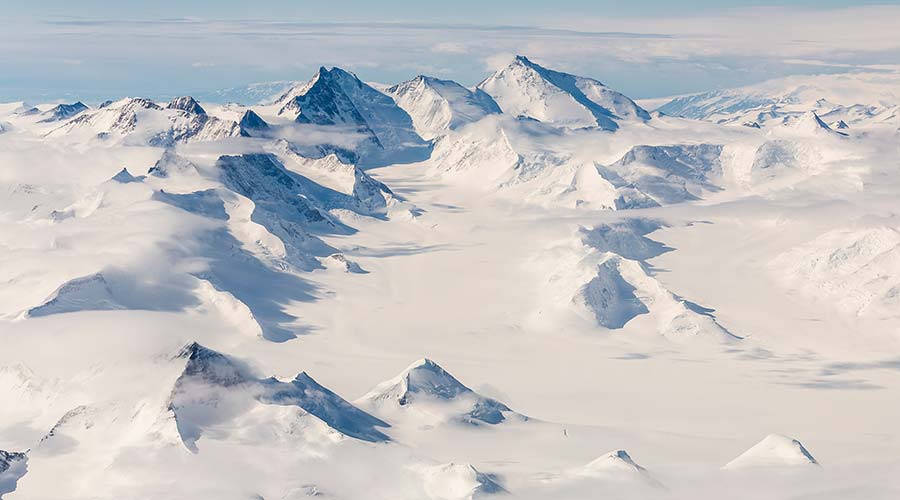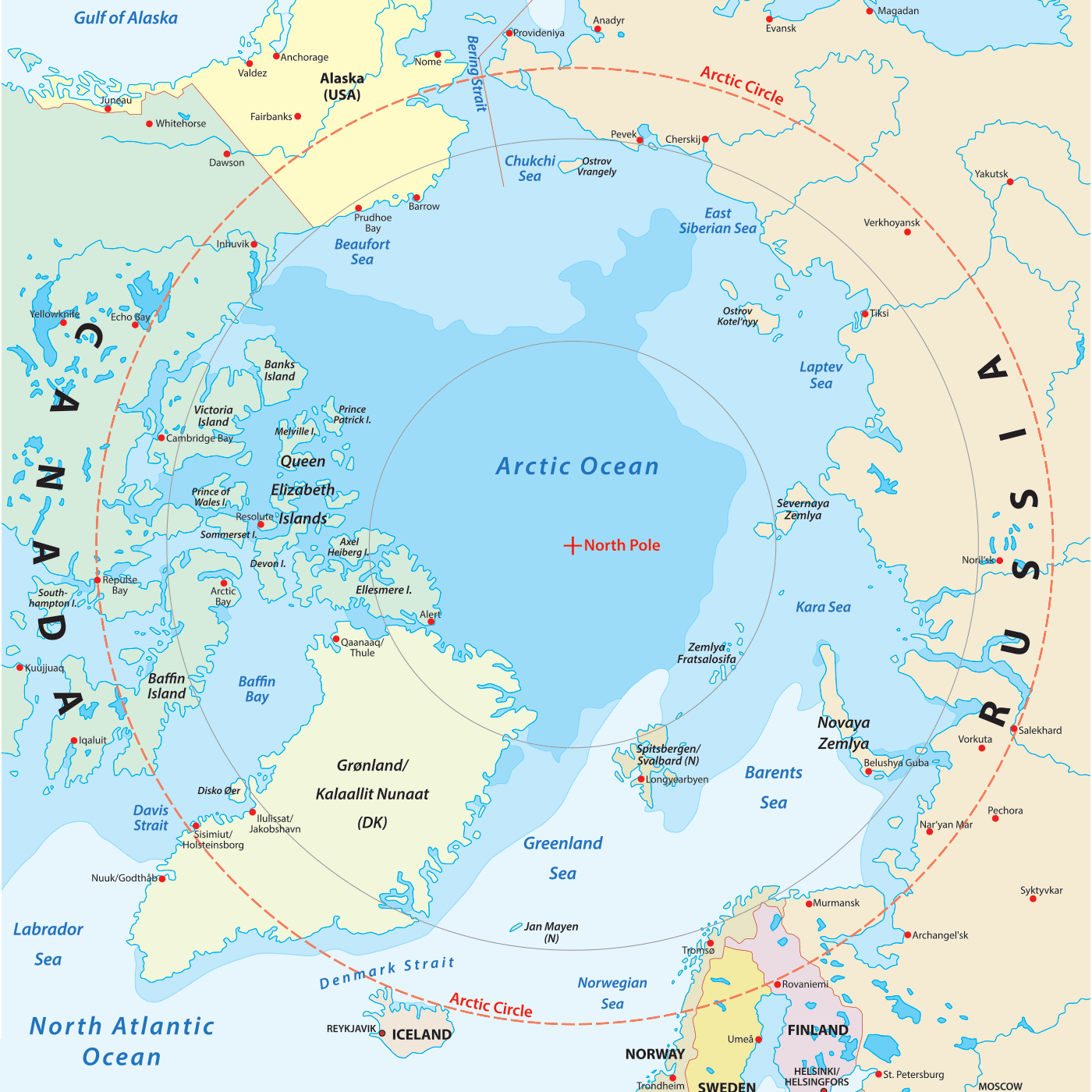The Arctic
Always Surprising, Often Misunderstood
The Arctic polar region is located in the northernmost part of the planet and is bordered by the subarctic and temperate zones. Our expedition voyages in the Arctic include journeys to Jan Mayen, Iceland, Canada, Svalbard, and Greenland.
- At least 40 Indigenous languages are spoken in the Arctic, including the Inuit-Yupik-Unangax languages (between eastern Siberia and East Greenland), Sami languages in northern Scandinavia, Athabaskan languages in Canada and Alaska, and a variety of unrelated languages in northern Russia, including Nivkh and Evenk.
- The Greenland Ice Sheet is the largest mass of ice outside Antarctica, measuring 1.71 million km². That’s over three times the size of France!
- Despite being viewed as a constant deep ‘’’’’’’]freeze, Arctic temperatures vary hugely by location and season. The warmest summer areas are in Arctic Russia, while the coldest summers are atop the Greenland Ice Sheet. The warmest Arctic winters are in coastal areas of Scandinavia, but temperatures on the Greenland Ice Sheet have been known to drop to a terrifying -69.6°C!
- Despite its proximity to large human populations, the North Pole was only verifiably attained in 1926 – 14 years after the South Pole. Both records were set by legendary Norwegian explorer Roald Amundsen.

A Rich and Varied Geography
The Arctic is the northernmost region of Earth and is dominated by the Arctic Ocean Basin. Most scientists describe the Arctic as the area within the Arctic Circle, a line of latitude about 66.5° north of the Equator, above which midnight sun and polar night occur. Others define the Arctic as the region in which July average temperatures are below 10°C – the limit for trees to grow. The Arctic is almost entirely covered by water, much of it frozen. Some features, such as glaciers and icebergs, are frozen freshwater, while the Arctic Ocean itself is covered by frozen seawater.
Because the Arctic Ocean absorbs so much more solar radiation than the reflective Antarctic Ice Sheet, the Arctic is much warmer than the Antarctic. In fact, its geography and wildlife are highly diverse, with some areas remaining practically ice-free all year round, while similar latitudes elsewhere are permanently ice-covered.

A Territory Shared by Many Countries
Eight countries have territory north of the Arctic Circle: Norway, Sweden, Finland, Russia, the USA (Alaska), Canada, Iceland and Greenland (a constituent country of the Kingdom of Denmark). Tromsø, Norway, is the largest city north of the Arctic Circle in Scandinavia and has become popularly known as the Arctic’s capital thanks to its size, rich history, and diversity. Inhabited since the end of the last Ice Age, Tromsø is home to 58,000 people of more than 100 different nationalities. The largest city in the Arctic is Murmansk in Russia (pop. ≈300,000), and the northernmost is Longyearbyen, Svalbard (pop. ≈1,800).

Spotting Wildlife
Despite its challenging climate, the Arctic region hosts a range of wildlife species, some common, some elusive, with sightings largely dependent on where, exactly, your expedition takes you. Arctic fox are a common sighting in many places, as are muskoxen and Arctic hare. Harbor seals and grey seals are often spotted, and Narwhals and polar bears are a rare but thrilling sight. Birders will be excited to know that over 230 species of birds have been spotted in Greenland alone.

Our Life-Changing Expeditions
Join us on any of our expeditions to the Antarctic Peninsula, and you’ll experience the incredibly diverse wildlife, stunning mountain scenery, and magnificent icebergs that make this part of the world unlike any other.
Our Falklands, South Georgia, and Antarctic Peninsula voyages follow the legendary explorer Sir Ernest Shackleton’s trail to Antarctica and the South Shetlands. Sailing between Elephant Island and South Georgia offers a glimpse into the passage made famous by the man they called “The Boss”100 years ago.
South Georgia is one of the world’s greatest natural wonders. Wildlife-packed beaches, penguins by the millions (not a typo), former whaling stations, and jaw-dropping scenery are guaranteed on any of our itineraries, which include this storied isle.

